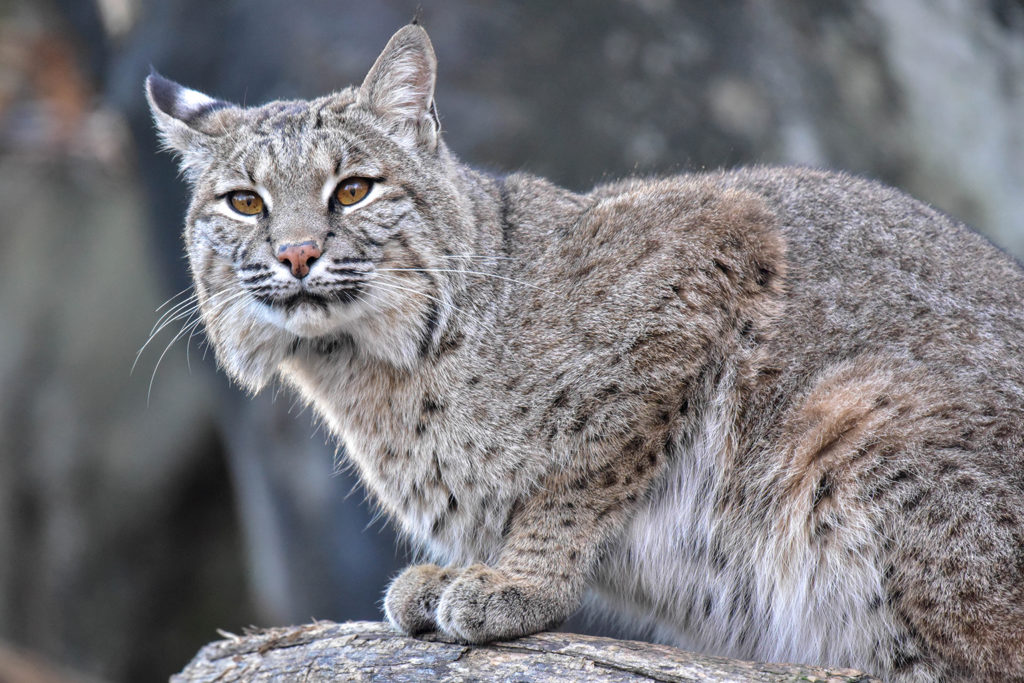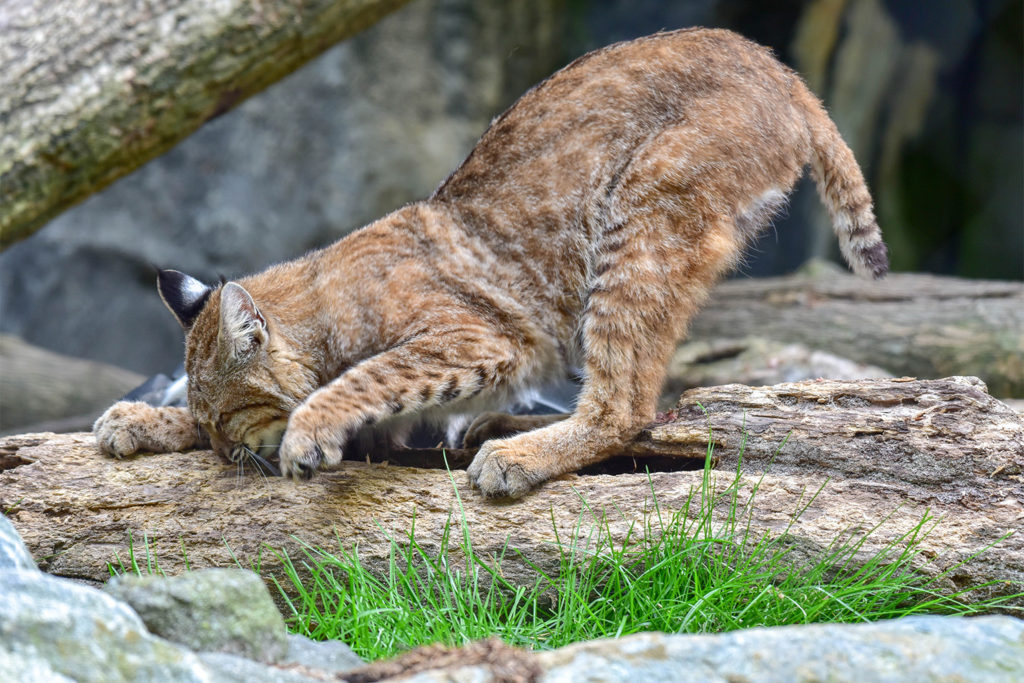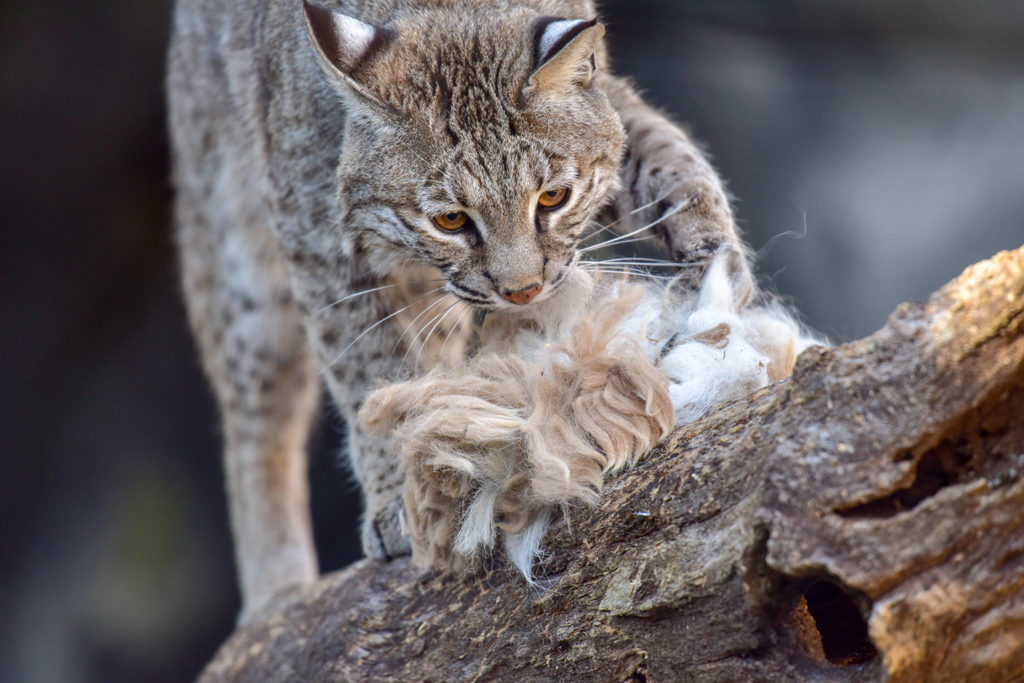Overview
“Where I live”
Bobcats are wide ranging across North America, from central Mexico throughout the contiguous United States and into southern Canada. They are native to Maryland. They are highly adaptive and can thrive in a variety of habitats, including forest, woodlands, scrubland, swamp, desert, and even man-made environments such as golf courses.
“How I live there”
Bobcats are solitary animals that prefer to live and hunt alone. Rarely seen by humans, they occupy individual home territories that can range considerably in size and may overlap the home territories of other bobcats. They mark their territories through scent, using feces, urine, scrapes, or gland secretions.
Bobcats tend to rest by day in places that provide good cover. They hunt in low light at dawn, dusk, or night. They den among rocks or in caves where they can hide, take shelter from the elements, and raise young.
Bobcats are opportunistic carnivores. Their diet is varied, which allows them to survive in many types of habitat. They prey mainly upon animals smaller than themselves, such as rabbits, birds, rodents, fish, and snakes, and they thrive in places that provide plentiful small prey. However, they are ferocious predators also capable of taking down prey several times their size, including deer, lambs, and even livestock. Not built for sustained speed, bobcats rely instead on the element of surprise and a powerful pounce to ambush and then capture prey.
“Making My Mark”
Despite being rarely sighted by humans, bobcats impact our lives more than we imagine. They are the most populous species of North American wildcat by far, with as many as one million living within the United States alone. In every habitat they occupy, including around farms and cropland, they play an important role in keeping populations of small animals such as rodents and hares in check.
Raising Young
While renowned for their stealth and secrecy, bobcats make themselves known to each other during mating season. Male bobcats emit an eerie, wailing cry to advertise themselves to nearby females and to warn off competing males. After mating, males and females return to their respective home territories. Females give birth in secluded dens about two months later, in early spring. Bobcat kittens are helpless at birth and remain hidden in their dens until they are big and strong enough to come outside and start following their mothers. Females nurse their kittens for about eight weeks and then spend the next several months introducing them to solid food and teaching them how to hunt. Bobcat kittens learn to hunt by shadowing their mother on hunts, following her tail, which serves as a white beacon. Come autumn, young bobcats are ready to live on their own.
“What eats me”
Bobcats might be preyed upon by a number of animals larger than themselves, depending on where they live, including mountain lions, coyotes, and dogs. Bobcats are also at risk of being killed for their fur by hunters. Each U.S. state enforces its own hunting and trapping regulations affecting bobcats. More so than hunting and predation, though, bobcats are threatened indirectly by humans. This plays out in a number of ways: habitat loss due to development; habitat fragmentation due to road construction; ill effects of eating pesticide-infected animals; and death from being struck by vehicles on roadways.
Conservation
Because of their large overall population and wide range across North America, bobcats are considered a stable species. The IUCN, the world’s leading conservation organization, lists them as a species of “least concern.” In Maryland, bobcats are considered uncommon and live mainly in the western part of the state.
The Maryland Zoo’s Bobcat Exhibit is generously supported by Frostburg State University, home of the bobcats.
Taxonomy
- Kingdom: Animalia
- Phylum: Chordata
- Subphylum: Vertebrata
- Class: Mammalia
- Order: Carnivora
- Family: Felidae
- Genera: Lynx
- Species: Rufus




